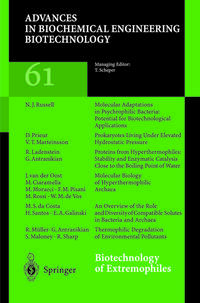
In this special issue review articles summarize the most outstanding features of microorganisms that can survive under extreme conditions. These microorganisms are adapted to living at 100° C in volcanic springs, at low temperatures in the cold polar seas, at high pressure in the deep sea, at very low and high pH values (pH 0-1 or pH 10-11), or at very high salt concentrations (35%). The latest findings on the molecular biology and the protein structure of these exotic organisms are presented. In addition, the potential applications of extremophiles are reviewed, including the production of enzymes, compatible solutes and the use of these extremophiles in the degradation of xenobiotics.